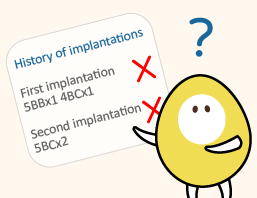
To maintain the success rate of artificial reproductive and to lower the rises of multi-birth. Countries have been giving out guidelines at numbers of blastocysts for implantation, which provides for different reproductive centers. How many should we transfer to provide the most genuine help?
"The doctor told me that transferring 2-3 blastocysts are good enough, but my husband wants to do all 4 that all we have, as the previous 3 went through PGS were abnormal..." When I got your call, I can feel your worries, hopeless, hesitating, wanting to talk to someone.
one is the success rate of IVF, the other one is chances of having multiple births, how can we find the balance? From the perspective of modern artificial reproductive, the goal is to bring a healthy baby back home asap.
Multi-pregnancy pregnancy bears high risks for the mother and the baby as well, including premature birth, gestational diabetes, pre-eclampsia, fetal underweight, etc., and there are risks in fetal reduction surgery.
To maintain the success rate of artificial reproduction and reduce the risk of multiple births, countries have begun to set guidelines for the fertility centers, suggesting the number of blastocysts for implantation.
How many should we transfer? How can we provide the most substantial help?
European countries set a guideline for themselves considering the number of implants, blastocysts grading, age, and other parameters.
According to the Taiwanese Society for Reproductive Medicine (TSRM), the suggested number of blastocysts for implantation are as follow. For blastocysts with normal PGS result, transferring one will be enough.
Strok Fertility Center collected the four-year data from 2013.-2017.01, there were 2,857 thawed blastocysts implantation cycles, which were divided into five age groups according to the TSRM index. The average number of implants was 1.65 vs. 1.82 vs. 1.97. Vs. 1.98 vs.1.00; and multiple birth rates were 16.1% vs. 15.2% vs. 9.9% vs. 4.7% vs. 0.3%.
We measured the live birth rate data from the period of 2013.01-2015.12. There were 1,842 thawing implantation cycles, and the average number of implantation is 1.70 vs. 1.80 vs. 2.01 vs. 1.96 vs. 1.00. As for the live birth rate was 52.9% vs. 48.8% vs. 33.6% vs. 17.5% vs. 43.0%.
"Transferring a normal blastocyst, giving you a healthy baby" has always been our biggest goal. As we mentioned at the beginning, the client was facing a predicament that all the blastocysts were abnormal and cannot be implanted.
Although she was 37 years old and the prevalence rate of embryo abnormality is high, I still did not recommend that she transfer all the rest four unexamined blastocysts.
After listening to my analysis of the pros and cons, she thanked me happily. It seemed to help the client to clear her thoughts. I believe that no matter what the final decision is, she will be okay.
Reference:
1.Clinical data by Stork Fertility Center
2.TSRM guideline (2016)



